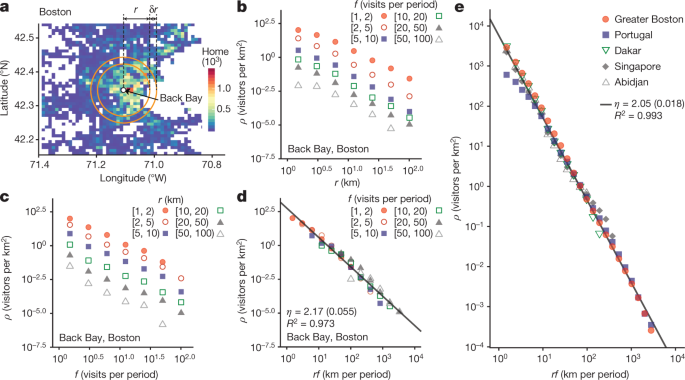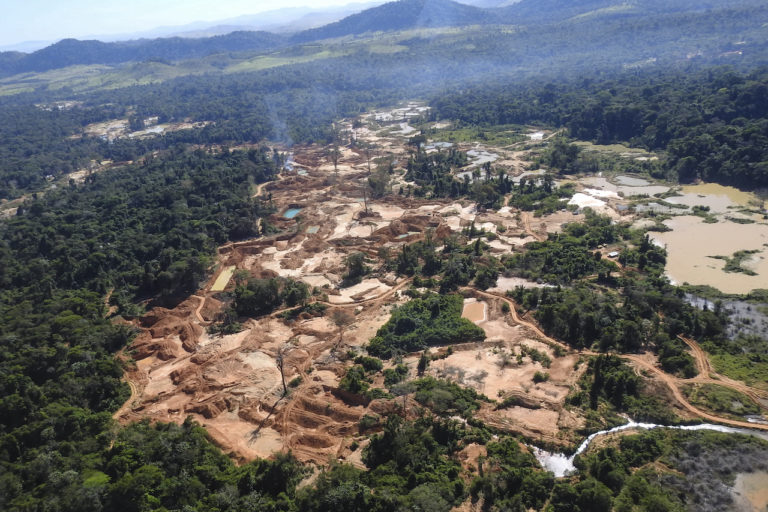The universal law of visiting human mobility

Batty, M. The new science of cities (MIT Press, 2013).
Barthélemy, M. The structure and dynamics of cities (Cambridge Univ. Press, 2016).
Louail, T. et al. Discover the spatial structure of mobility networks. Nat. Common. 6, 6007 (2015).
Google Scholar
Anderson, RM and May, RM Infectious diseases of humans: dynamics and control (Oxford Univ. Press, 1991).
Eubank, S. et al. Modeling disease outbreaks in realistic urban social networks. Nature 429, 180–184 (2004).
Google Scholar
Wesolowski, A. et al. Quantify the impact of human mobility on malaria. Science 338, 267-270 (2012).
Google Scholar
Jia, JS et al. The population flow determines the spatiotemporal distribution of COVID-19 in China. Nature 582, 389–394 (2020).
Google Scholar
Bettencourt, LMA The origins of scaling up in cities. Science 340, 1438–1441 (2013).
Google Scholar
Glaeser, EL, Kallal, HD, Scheinkman, JA & Shleifer, A. Growth in cities. J. Polit. Econ. 100, 1126-1152 (1992).
Google Scholar
Fujita, M., Krugman, PR and Venables, AJ The space economy: cities, regions and international trade (MIT Press, 1999).
Sveikauskas, L. The productivity of cities. QJ Econ. 89, 393-413 (1975).
Google Scholar
Zipf, GK The P1P2 / D hypothesis: on the interurban movement of people. A m. Sociol. Tower. 11, 677-686 (1946).
Google Scholar
Erlander, S. and Stewart, NF The gravity model in transport analysis: theory and extensions (CRC Press, 1990).
Simini, F., González, MC, Maritan, A. and Barabási, A.-L. A universal model for mobility and migration models. Nature 484, 96-100 (2012).
Google Scholar
Zipf, GK Human behavior and the principle of least effort (Addison-Wesley, 1949).
Christaller, W. Die zentralen Orte in Süddeutschland (Gustav Fischer, 1933).
Pan, W., Ghoshal, G., Krumme, C., Cebrian, M. & Pentland, A. Urban characteristics attributable to density linkage. Nat. Common. 4, 1961 (2013).
Google Scholar
Schläpfer, M. et al. The scaling of human interactions with the size of the city. JR Soc. Interface 11, 20130789 (2014).
Google Scholar
Li, R. et al. Simple spatial scaling rules behind complex cities. Nat. Common. 8, 1841 (2017).
Google Scholar
Anas, A., Arnott, R. & Small, KA Urban spatial structure. J. Econ. Alight. 36, 1426–1464 (1998).
Google Scholar
Henderson, V. and Thisse, J.-F. Manual of regional and urban economics: cities and geography (Elsevier, 2004).
Ewing, R. & Hamidi, S. Compactness versus sprawl: a review of recent evidence from the United States. J. Plann. Alight. 30, 413–432 (2015).
Google Scholar
Chang, S. et al. COVID-19 mobility network models explain inequalities and inform reopening. Nature 589, 82–87 (2021).
Google Scholar
Axhausen, KW & Gärling, T. Activity-Based Approaches to Travel Analysis: Conceptual Frameworks, Models and Research Problems. Transp. Tower. 12, 323–341 (1992).
Google Scholar
Barbosa, H. et al. Human mobility: models and applications. Phys. Representative. 734, 1–74 (2018).
Google Scholar
Stouffer, SA Intervention opportunities: a theory linking mobility and distance. A m. Sociol. Tower. 5, 845–867 (1940).
Google Scholar
Noulas, A., Scellato, S., Lambiotte, R., Pontil, M. & Mascolo, C. A tale of many cities: universal models of human urban mobility. PLoS ONE 7, e37027 (2012); correction 7, https://doi.org/10.1371/annotation/ca85bf7a-7922-47d5-8bfb-bcdf25af8c72 (2012).
Google Scholar
Yan, X.-Y., Wang, W.-X., Gao, Z.-Y. And Lai, Y.-C. Universal model of individual and population mobility at various spatial scales. Nat. Common. 8, 1639 (2017).
Google Scholar
Mazzoli, M. et al. Field theory for recurrent mobility. Nat. Common. ten, 3895 (2019).
Google Scholar
Brockmann, D., Hufnagel, L. & Geisel, T. The scale laws of human travel. Nature 439, 462–465 (2006).
Google Scholar
Gonzalez, MC, Hidalgo, California and Barabási, A.-L. Understand the patterns of individual human mobility. Nature 453, 779-782 (2008); Addendum 453, 779-782 (2008).
Google Scholar
Song, C., Koren, T., Wang, P. and Barabási, A.-L. Modeling of the scale properties of human mobility. Nat. Phys. 6, 818–823 (2010).
Google Scholar
Alessandretti, L., Aslak, U. & Lehmann, S. Scales of human mobility. Nature 587, 402–407 (2020).
Google Scholar
Bertaud, A. Ordering without design: how markets shape cities (MIT Press, 2018).
Louail, T. et al. From mobile phone data to the spatial structure of cities. Sci. Representative. 4, 5276 (2014).
Google Scholar
Zhong, C. et al. Reveal the centrality in the spatial structure of cities from models of human activity. Urban stud. 54, 437–455 (2017).
Google Scholar
Rozenfeld, HD et al. Laws of population growth. Proc. Natl Acad. Sci. United States 105, 18702–18707 (2008).
Google Scholar
Cao, W., Dong, L., Wu, L. & Liu, Y. Quantification of urban areas with multi-source data based on percolation theory. Remote Sens. About. 241, 111730 (2020).
Google Scholar
Batty, M. The size, scale and shape of cities. Science 319, 769–771 (2008).
Google Scholar
Rozenfeld, HD, Rybski, D., Gabaix, X. & Makse, HA Area and population of cities: new perspectives from a different perspective on cities. A m. Econ. Tower. 101, 2205-2225 (2011).
Google Scholar
Pappalardo, L. et al. Return and explorer dichotomy in human mobility. Nat. Common. 6, 8166 (2015).
Google Scholar
Weber, A. and Friedrich, CJ Alfred Weber’s theory on the location of industries (Univ. Chicago Press, 1929).
Kreps, DM Game theory and economic modeling (Oxford Univ. Press, 1990).
Myerson, RB Game theory (Harvard Univ. Press, 2013).
Blondel, VD, Decuyper, A. & Krings, G. A survey of the results of the analysis of mobile phone data sets. EPJ Data Sci. 4, 10 (2015).
Google Scholar
Calabrese, F., Diao, M., Di Lorenzo, G., Ferreira, J. Jr & Ratti, C. Understanding individual mobility models from urban detection data: an example of a mobile phone trace. Transp. Res. Part c 26, 301–313 (2013).
Google Scholar
de Montjoye, Y.-A., Smoreda, Z., Trinquart, R., Ziemlicki, C. & Blondel, VD D4D-Senegal: the second challenge of mobile data for development. Preprint at https://arxiv.org/abs/1407.4885 (2014).
Blondel, VD et al. Data for Development: The D4D Mobile Phone Data Challenge. Preprint at https://arxiv.org/abs/1210.0137 (2012).
Jiang, S. et al. The TimeGeo modeling framework for urban mobility without travel surveys. Proc. Natl Acad. Sci. United States 113, E5370 to E5378 (2016); correction 113, E7137 (2016).
Song, C., Qu, Z., Blumm, N. and Barabási, A.-L. Limits of the predictability of human mobility. Science 327, 1018-1021 (2010).
Google Scholar
Wilson, AG The use of entropy maximizing models in the theory of path distribution, mode distribution and route distribution. J. Transp. Econ. Politics 3, 108-126 (1969).
Google Scholar
Masucci, AP, Serras, J., Johansson, A. & Batty, M. Gravity versus radiation models: on the importance of scale and heterogeneity in commuting flows. Phys. Rev. E 88, 022812 (2013).
Google Scholar





